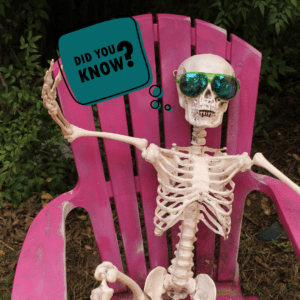Seating positions that reduce pain while working
These days, most of us are spending a lot more time in the seated 🪑 position. In fact, adults in the UK spend an average of 11 hours 😲 a day sitting down – that’s most of the time we’re awake!
If you’re working from home, you might not have an ergonomic office chair to work from (although we recommend investing in one), so you may find yourself in a dining room or multifunctional chair. This is when paying attention to your posture and the position you’re sitting in is even more important, as your chair has not necessarily been designed to support you properly.
If you’re at the office, it’s possible that the long hours 🕑 and pressure to perform mean that you’re not paying much attention to how you’re sitting in your chair, even if it’s a proper office chair.
Either way, if you’re not sitting in the right position, you’re most likely experiencing back or neck pain. The trick is to sit correctly ✅ and to regularly become aware of your posture so that you can readjust to sit in positions that reduce pain 😁 rather than cause it. We will also be sharing some stretches below that you can do to improve your posture while sitting.
How can seating positions help me?
Correct posture and positioning while sitting can reduce strain on your body when you move and exercise 🏃♀️, and reduce wear and tear on your joints 🦴, muscles, and ligaments. It will also help to decrease the risk of muscle strain and overuse conditions as well as improve your spine health. Most importantly, if you sit in positions that reduce your pain while working, you’re likely to have a better quality of life 🙌 and be more productive.
Tips for reducing pain while sitting
There is no 100% perfect posture that you should always be sitting in. The right seating position to reduce pain will differ depending on your chair 🪑 and desk as well as your body. However, we can share our top tips for positioning yourself in such a way that you can reduce your pain while working.
- Try not to sit or lie on the couch 🛋 or in your bed 🛏 with your computer. Sitting at a desk or table will instantly reduce the strain on your neck and back and result in less pain in these areas.
- When sitting in a chair, ensure that your head 🧑 is always right above your shoulders and hips.
- Make sure that you have proper lumbar support. You can either use a pillow or a small, rolled-up towel to create this support.
- Your arms 💪 shouldn’t be too high or too low, with your elbows bent at around 90 degrees.
- Your feet 🦶 should be flat on the floor or supported by a footstool.
- Try to ensure that you’re distributing you weight evenly on your bum and not leaning to one particular side.
- Your knees 🦵 should be the same height or slightly lower than your hips.
- Your forearms and thighs should be parallel to the floor.
There are also some important things to remember when it comes to the technology 👩💻 you’re working with.
- Position your head about an arm’s length away from your screen 💻.
- Avoid having to reach too far by keeping your keyboard ⌨ and mouse close to each other.
- Use a hands-free device 🎧 for long calls to prevent your neck from straining.
Simple exercises to reduce pain while sitting
At Inspired Health, we are experts in ✨ good posture ✨. When having a consultation with us, we will assess your posture and prescribe stretches and exercises specific to your body and your needs that will improve your sitting posture. But there are some general stretches and exercises we can share with you here that will improve your posture while sitting to reduce or avoid pain.
Corner stretch
While facing a corner, place your forearms on the walls on either side of the corner with your elbows around shoulder height. Place one foot in front of the other and bend your front knee, bringing your body closer to the corner. Hold this stretch for 20 to 30 seconds and repeat.
Chin tucks
Move your head straight back so that your ears are in line with your shoulders. Keep your chin down and think of a string pulling you up by the crown of your head. Hold for 10 seconds and repeat this ten times.
Thoracic extension
You will need either a foam roller or a rolled-up towel to do this one. Place the towel or roller on the floor and then lie on it with the middle of your back stretched over it. Your bum should be flat on the floor, and your knees should be bent so that your feet are flat. You can put your hands behind your head. Hold this position for one minute.
Any exercise, even something as simple as a short walk 🚶♂️ around the block, will benefit your posture while you are seated.
Stay tuned to our Newsletter 📰 to find more tips, tricks, and simple exercises that you can do to improve your overall health and wellbeing.





